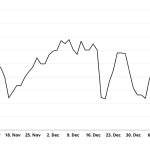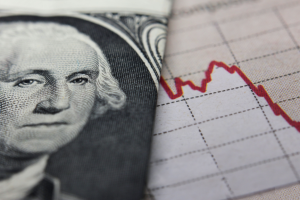
Thanks to Microsoft’s (NASDAQ:MSFT) $69 billion acquisition of Activision Blizzard on Oct. 14, Lululemon (NASDAQ:LULU) was chosen to replace it as one of the select S&P 500 stocks.
As is usually the case when a stock is added to the index, LULU stock gained 10% on the news since funds that track the index must buy LULU stock to replace the void left by Activision. However, LULU lost about $21 of those gains thanks to a poor market by Oct. 20.
Stocks get added and removed from the index for all kinds of reasons. To join the index, a stock must have an unadjusted market capitalization of $14.5 billion. Lululemon meets that by $35 billion.
In the 1970s, the average tenure of an S&P 500 company was 35 years. By 2019, it was down to 20 years.
From where I sit, there are a lot of companies that shouldn’t be in the index. Here are three that I believe ought to be kicked out.
Norwegian Cruise Line Holdings (NCLH)

Norwegian Cruise Line Holdings (NYSE:NCLH) is one of six companies from the travel services industry, according to Finviz.com data. However, three of the seven names are cruise ship operators. NCLH is by far the smallest of the three cruise operators with a market cap of $5.8 billion, less than half Carnival (NYSE:CCL) and Royal Caribbean Cruises (NYSE:RCL).
Do we need three of them in the index? Especially since the S&P has always been marketed as representing some of America’s largest companies.
Of the 17 analysts covering its stock, 35% rate it a buy. Of the 23 covering Carnival, 48% rate it a buy, while 60% of the 20 analysts that cover Royal Caribbean rate it a buy.
As far back as 2018, I’ve thought RCL was a long-term winner. The pandemic might have slowed it down, but it’s the best of three, in my opinion.
Out with NCLH and in with some other travel-related stock that’s not a cruise ship operator.
American Airlines Group (AAL)

American Airlines Group (NASDAQ:AAL) is one of five airlines in the index. While AAL’s market cap of $7.2 billion is 75% higher than Alaska Air Group (NYSE:ALK), Alaska Air is the better value, and probably the better airline.
Just 3 of 22 analysts rate AAL a buy compared to 12 of 15 for Alaskan Air. Now, I’ll admit I do like to occasionally make fun of lousy analyst calls in my writing, but it’s safe to say that Wall Street favors the latter by a considerable margin.
American Airlines cut its adjusted profit for the year on Oct. 19 from $3.38 at the midpoint of its previous guidance to $2.38 a share.
Alaska Air reported earnings on the same day. It, too, cut its profit for the year. Its previous guidance called for $6.50 a share at the midpoint. It lowered that to $4.50, a 31% cut in 2023 earnings. American’s cut was 30%, 100 basis points less.
So, while AAL’s P/E ratio of 4.7 is less than Alaska’s at 7.1, the difference in analyst Buy ratings suggests Wall Street believes Alaska has higher quality profits that are sustainable in the future.
And anyway, four airlines are enough representation.
Federal Realty Investment Trust (FRT)

I didn’t select Federal Realty Investment Trust (NYSE:FRT) because of any particular problem I saw with the Maryland-based owner of shopping centers. It’s merely that investors have four larger retail real estate investment trusts (REITs) to choose from, including Simon Property Group (NYSE:SPG), one of the world’s largest owners of malls in the U.S., Europe, and Asia.
Further, the index has 28 REITs, and FRT is the smallest by market cap. I think it’s fair to say there are safer bets among the other 27 names. Other than Simon, here are three examples I can think of right off the top: Prologis (NYSE:PLD), VICI Properties (NYSE:VICI), and Public Storage (NYSE:PSA). The average dividend yield of these three is 4.7%.
Barron’s StockGrader gives it a Sell rating of 47.23 out of 100. This suggests you’re not paying for growth at a reasonable price at its current value. It downgraded the stock from Hold in August. It’s lost 15% of its value since.
However, analysts give it a Hold with eight rating it “Overweight” or an outright “Buy” and a target price of $108 — 24% higher than its current share price.
Yielding 5% and increasing its annual dividend for 56 consecutive years, FRT is the toughest of my three choices to boot from the S&P 500. It’s purely a size thing. The business itself appears sound.
On the date of publication, Will Ashworth did not have (either directly or indirectly) any positions in the securities mentioned in this article. The opinions expressed in this article are those of the writer, subject to the InvestorPlace.com Publishing Guidelines.





